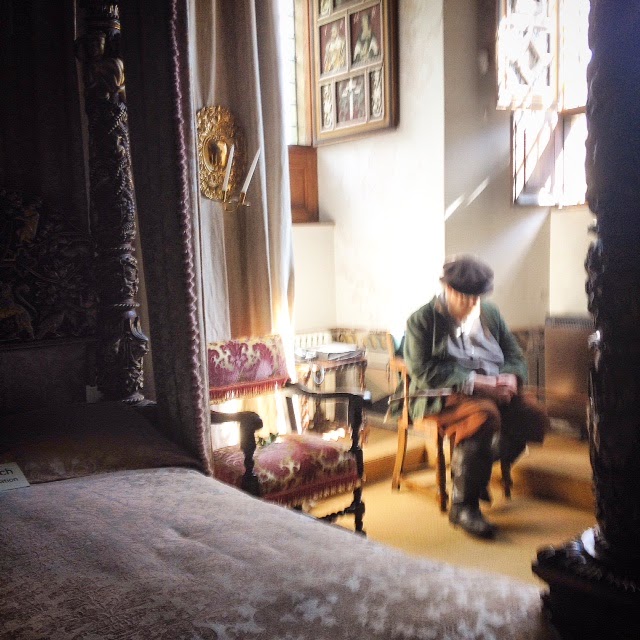The Royal Palace of Falkland was used as a country residence by Stuart kings and queens who used to hunt deer and wild boar in the nearby Fife forests. Mary Queen of Scots spent some of the happiest days of her tragic life here, hunting and hawking around the woods and park, which is still beautifully maintained today.
The palace was built between 1501 and 1541 by James IV and James V, replacing earlier castle from the 12th century, traces of which can still be seen in the grounds.
The Palace fell into ruin from the late 17th to early 18th centuries after it fell into disuse and was badly burnt by Cromwellian troops.In the early 19th century it was restored by the 3rdMarquess of Bute and his descendants still live in the Palace today after giving the National Trust for Scotland the role of Deputy Keeper in the 1950s.The original and reconstructed rooms are packed with fine portraits of the Stuart monarchs, 17th-century Flemish tapestries, elaborate painted ceilings and antique furnishings.
The Palace was restored by the 3rd Marquess of Bute in the early 1900s. The roofed South Range contains the stunning Chapel Royal which is still a practicing Roman Catholic Chapel (one of the only surviving in a Palace owned by the Crown), Drawing Room, Tapestry Gallery and Edwardian Library. The ruined East Range was where the Royal Apartments would have been and the Cross House displays reconstructed King and Queen’s Rooms. The upper floors of the Gatehouse display the Keeper’s Apartments who would have maintained the Palace on behalf of the sovereign.
The Palace sits in nine acres of maintained grounds and formal gardens. The Pleasure Garden was designed and built by Percy Cane between 1947 and 1952 and contains three herbaceous borders enclosing a wide lawn with many varieties of shrubs and trees. The ancient Orchard contains various fruit trees, some as old as 150 years, as well as willow sculptures and a Labyrinth. The Wildflower Meadow carpets the Orchard and is a home for rare plants, insects and wildlife. A newly planted Physic Garden contains medicinal herbs which would have been grown at the time of Mary Queen of Scots. Falkland Palace is also home to the oldest Real or Royal Tennis Court in Britain, originally built for King James V in 1539 and played on by Mary Queen of Scots herself.
http://www.visitscotland.com/info/see-do/falkland-palace-and-gardens-p254171
Icon of Lady of Ostrabrama in Falkland Palace chapel
The icon ‘Our Lady of Ostrabrama’, created by 2nd Lt Albin Bratanek, was
a gift from the 3rd Polish Parachute Battalion stationed in Falkland Palace.
This gift was a highly artistic and sophisticated example of recycling.
It is almost beyond belief that it is made of corn beef tins, shells
and cartridge cases!
The text of the official act of transfer of the image says:
We the Polish Paratroops of the 3rd Battalion offer to you, the People
of Falkland a picture of Our Lady of OSTRABRAMA in souvenir of our stay
in Falkland and as a token of gratitude for all your kindness you have
shown us when stationed amongst you. This picture must be kept for ever
in the chapel of Falkland’s Palace.
May it cement the friendship of both our Nations.
FALKLAND A. D. 1944.









.JPG)

.JPG)










No comments:
Post a Comment